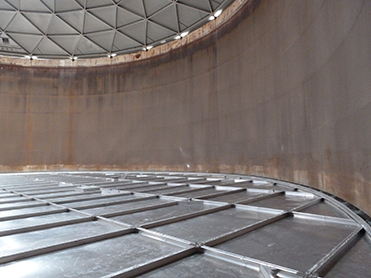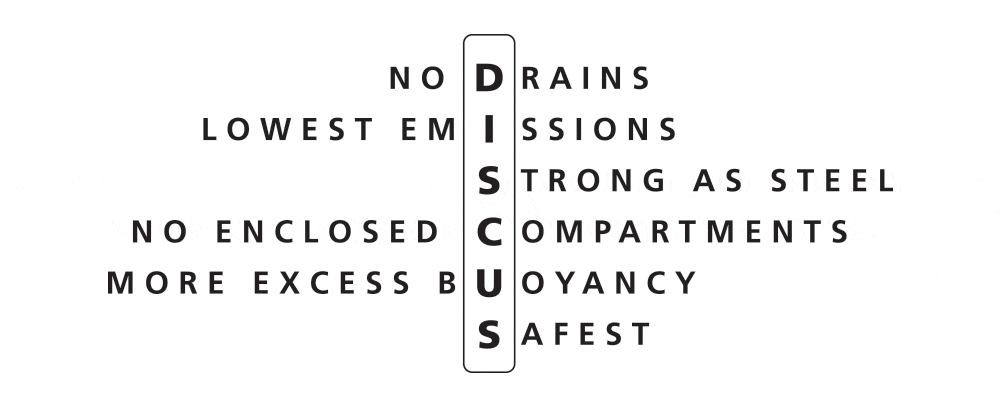Our story
The DISCUS OpenRaft™ is a patented Aluminum Internal Floating Roof (AIFR). It is the safest, strongest, and delivers the Lowest Achievable Emissions Rate (LAER). The signature open panel design solves the interrelated problems of performance, safety, and tank economics. The time for a better IFR has arrived.
Since the 1970s
The design principles of IFRs have essentially remained the same, while the issues of reliability, life expectancy, and maintenance have persisted.

The skin and pontoon IFRs developed in the 1970s are still widely used today, despite the fact that this type of roof frequently fails due to inadequate flotation, structural members spaced across a large grid, and poor test port design.
In the 1990s, IFR designs took a step forward with the advent of honeycomb ‘sandwich’ panel roofs. However, neither pontoon nor honeycomb compartment designs solved the universal safety concern with all floating roofs: trapped vapors. Both pontoon and sandwich panel roofs have enclosed compartments that often trap dangerous gasses and liquids.
Every pontoon or compartment must be individually tested and maintained, which is time consuming, costly, and often dangerous.
A number of incremental improvements took place over the years as bolted seams gave way to welded seams and steel was replaced with aluminum fabrication in order to accommodate cable suspension systems, but the universal safety concern remained.
A better idea whose time had come
David Rosenkrantz, founder of DISCUS Engineered Products, developed a better design. He thought hard about all the issues and of tank economics. He began with the premise that an aluminum IFR should not contain enclosed spaces. “We know that pontoons and enclosed compartments trap noxious gasses that are explosive, carcinogenic and dangerous. They could become bombs,” he says. “A better design would eliminate pontoons and enclosed compartments altogether.”
The DISCUS OpenRaft™ features an open panel design instead of enclosed flotation compartments.

The “rafts” are comprised of aluminum panels that are open on the top side. A technician can do a visual check and see if there is liquid or staining that indicates leakage, rather than have to examine and test each individual pontoon or enclosed compartment.
The DISCUS optional bolted or welded seams are designed to be as impervious as possible to leakage. The structure is strong enough that it does not require drains and so eliminates them as known emissions leak points. The patented deck seam minimizes leakage and evaporation to such a degree that it redefines the federal EPA’s Lowest Achievable Emission Rate (LAER) standard.
DISCUS OpenRaft™ changes everything
Colonial Pipeline was the first company to purchase and install the DISCUS OpenRaft™ at its facility in Atlanta. “With the DISCUS design, we are able to inspect from the top side of the deck so it saves time and money,” Alan Geis, tank program coordinator for Colonial Pipeline says. “Also, since it contains only one sheet of material and has no compartments, it does not trap vapors and free product so it doesn’t become hot. That’s one less thing for me to worry about.”
“When you factor in the short-term advantages and long-term cost benefits, our product becomes cost-effective,” notes Rosenkrantz. “Think: less risk; fewer accidents. Then consider: reduced downtime for cleaning, maintenance and testing, with tanks back in service much quicker. These are factors with huge savings and the industry has evolved to a point where that is recognized.”
Adapted from article by Leah Wheeler
Originally appeared in Tank Storage magazine
January/February 2014